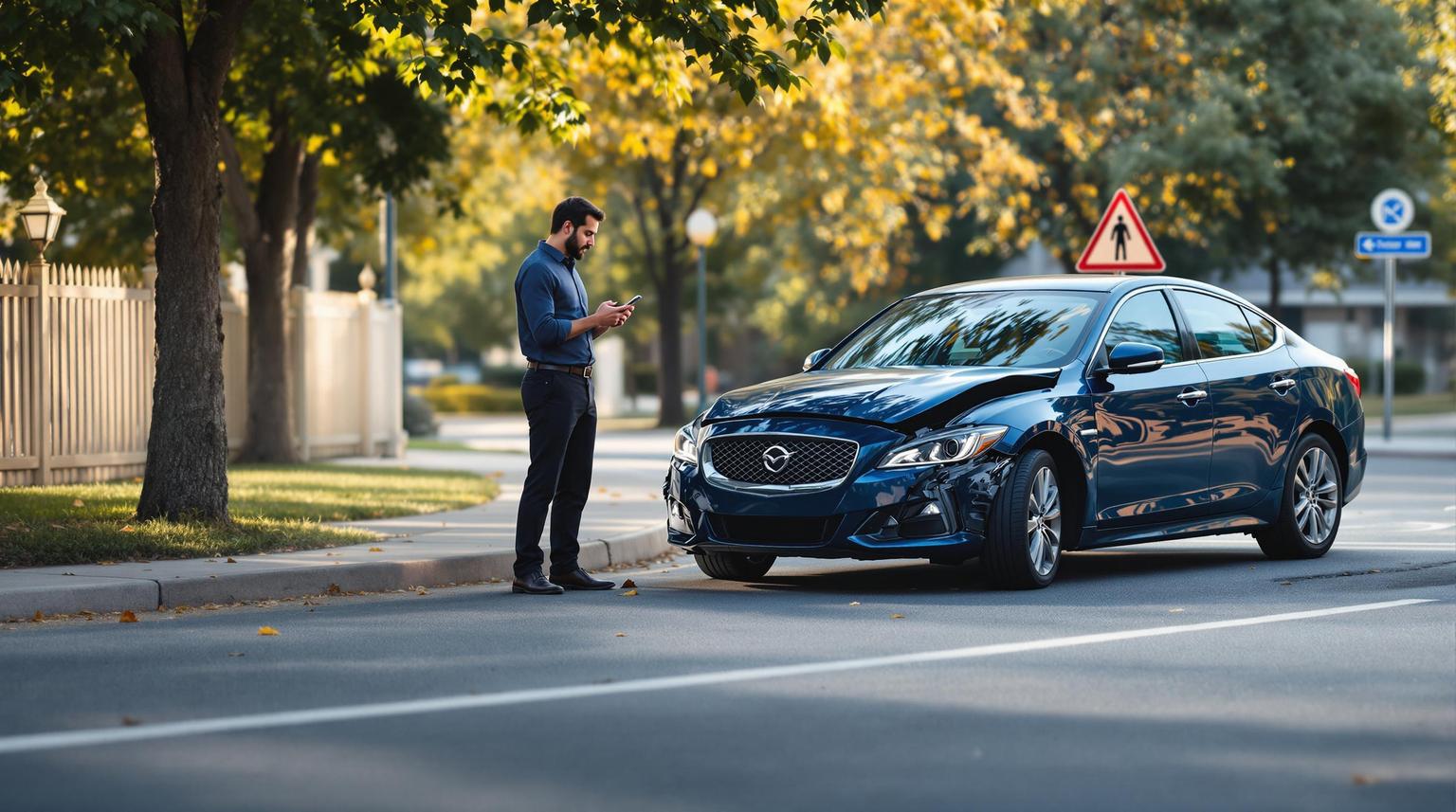March 10, 2025

Car accidents can be stressful, but knowing what to do can make a huge difference. Here's a quick guide to handle the situation effectively:
What you do right after a car accident can make a big difference in keeping everyone safe. The American Red Cross recommends a straightforward method: "check, call, care".
First, check yourself and others for injuries. Pay close attention to anyone who is:
"Keeping yourself safe will help you take care of others." – American Red Cross
If you notice someone who is unresponsive, struggling to breathe, or has severe bleeding or injuries, call 911 right away. When speaking to emergency services, be ready to share:
After addressing urgent medical needs, focus on getting to a safe location. If possible, move your vehicle out of traffic.
"When it is safe, move your vehicle to the side of the road, out of traffic"
Here’s what you should do to stay safe:
Important reminders:
Get law enforcement involved right away to document the accident and protect your interests.
Once you've ensured everyone's safety and addressed any immediate dangers, the next important step is involving the police.
In most states, contacting the police is required if the accident involves:
For example, in Massachusetts, you must file a crash report within 5 days if damages exceed $1,000 or if anyone is injured. In New Hampshire, the deadline for reporting under similar conditions is 15 days.
If the police can't come to the scene, head to the nearest station to file a report. This document will act as an official record and support the details you provide later.
When speaking with officers, have the following information ready:
The police report is an official, unbiased account of the accident. Insurance companies often use it to determine fault and process claims. If you notice any mistakes in the report, contact law enforcement immediately to correct them.
Carefully document everything at the scene to help with insurance claims and any legal matters.
Use your smartphone to take clear photos of the following:
Take extra photos to ensure no detail is overlooked. If it’s dark, use your phone’s flash for better clarity.
Ask witnesses for their name, contact information, and where they were during the accident. If possible, get a short written or recorded statement about what they saw, including their travel direction and destination. Also, take note of any nearby security cameras and the businesses that own them, as the footage might be useful later.
Write down key details like:
Record this information as soon as possible. Once you’ve documented the scene, you’ll have everything you need to share when exchanging details with others involved.
After documenting the accident scene, it's time to exchange details with the other driver(s) involved.
Take clear photos of licenses and insurance cards for accuracy. Stick to the facts when discussing the incident.
"Exchanging driver information is also a legal requirement after a collision." - KBG Injury Law
Be cautious about your words during this process. Avoid these phrases:
Keep the conversation focused on sharing the necessary details. Avoid making any statements that could suggest fault. If you're unsure about something, let the other party know you'll confirm with your insurance company. Protect your privacy by using your insurer's contact information instead of personal details. Always consult your insurer before discussing coverage or potential settlements.
Reach out to your insurance company as soon as possible to start your claim process. Reporting the incident quickly helps protect your interests and speeds up the claims process.
You can file your claim through your insurance provider's app, website, or by phone. Make sure you have the following information ready:
Once your claim is filed, you’ll need to select a repair shop. While your insurer may suggest options, the choice is ultimately yours. Consider these factors when deciding:
After documenting the accident, the next steps focus on organizing your records to make the claims process easier and more efficient.
Create specific digital folders for all your accident-related documents. Save these in a secure cloud storage system to ensure easy access and backup. This approach can help streamline the claims process.
Set up a physical file box with clearly labeled sections for important documents like insurance policies, medical records, repair bills, police reports, witness statements, and photographs.
"One of the most important things to know how to do after an auto accident is to keep your documentation organized. This is because the more organized you are, the better the chances of winning your claim." - Cochran Law
Once your vehicle has been repaired, take the time to inspect it thoroughly. Look for any unusual noises, alignment problems, or inconsistencies in the paintwork. If you notice anything, document it with photos and arrange a follow-up inspection. For unresolved issues, reach out to your insurance provider or the repair shop as soon as possible.
Hold onto all documents related to the accident for at least a year. These can include:
Staying organized with both digital and physical records can make a big difference in managing your claim effectively.